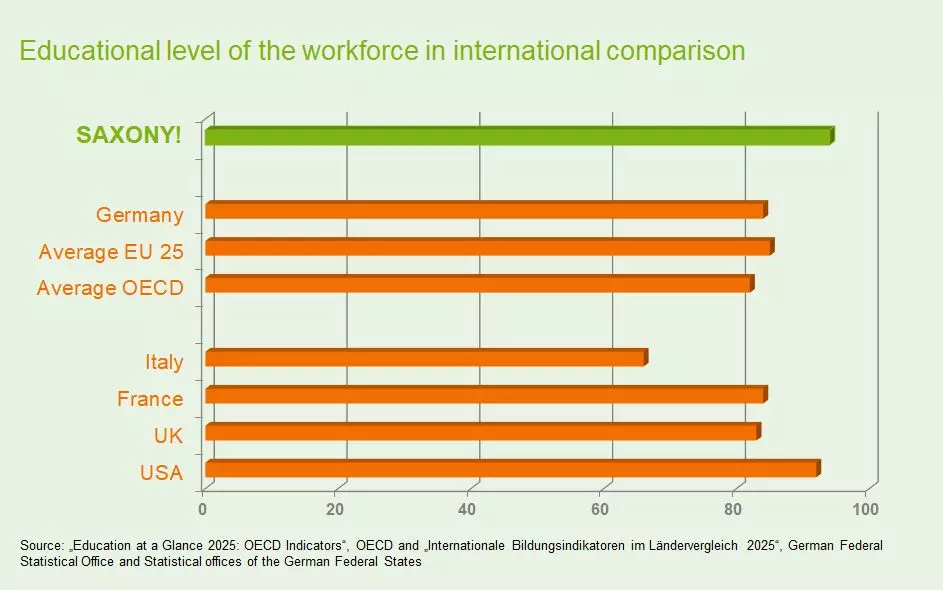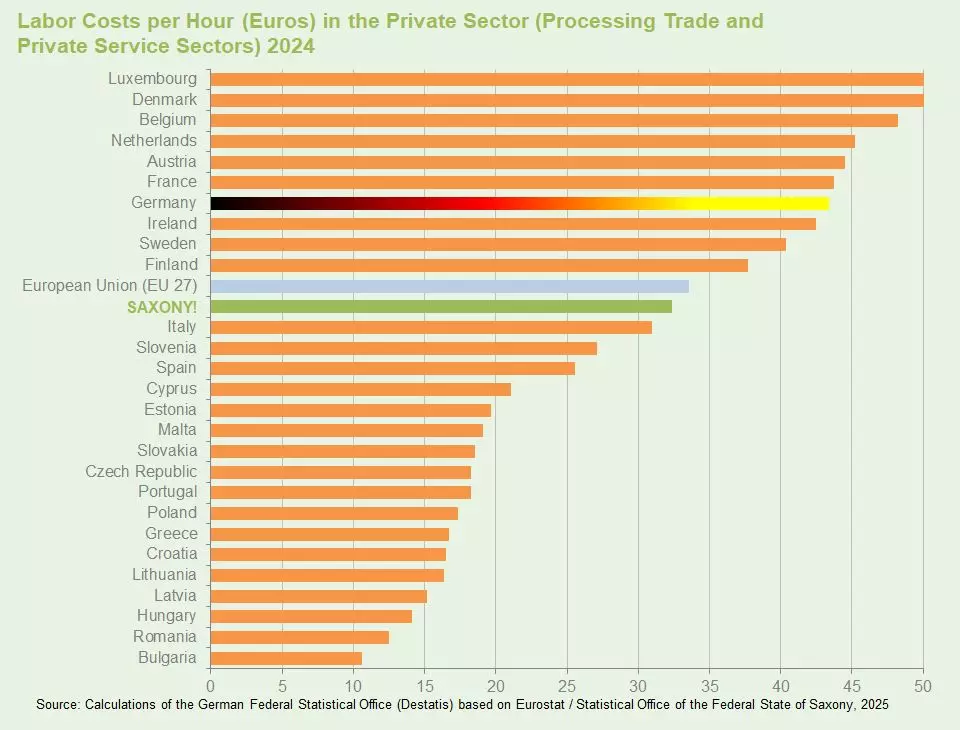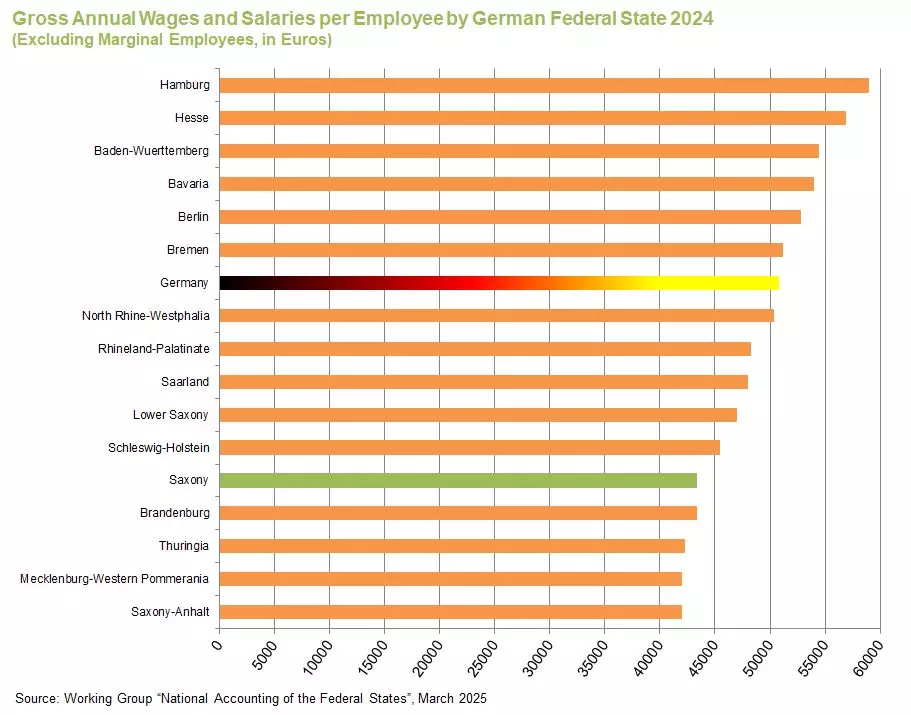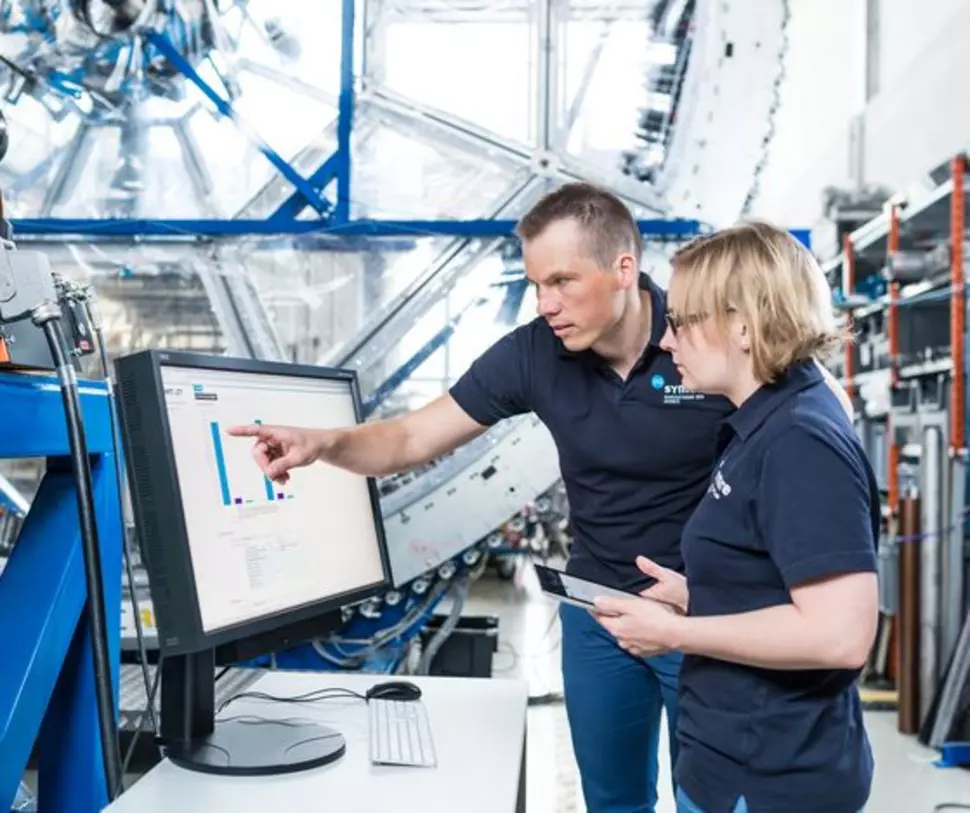It's All About People
... was the answer given by the head of chip giant AMD when he explained in 1996 why his company was investing in Saxony (today: GLOBALFOUNDRIES Fab 1). Then as now, it is the people who are Saxony's greatest strength. Excellently trained and highly motivated.

Infomodul
Facts on the Training of Skilled Workers in Saxony (Source: et al. INSM Education Monitor 2025)
-
Rank 1
among the education systems of the German federal states -
22.3 %
proportion of engineers among all graduates - top value in Germany -
7.4 %
Highest doctorate rate (German average: 5.3 %) -
94 %
of Saxons with at least university entrance qualification / completed vocational training

Saxony's Workforce Are Bright Minds
Saxony has the brightest minds. The level of education of the employable Saxon population (aged between 25 and 64) is higher than in Germany and in most EU and OECD countries. 94 percent of Saxons have at least a university entrance qualification or have completed vocational training. - The OECD average, for example, is "only" 82 percent.

Hourly Labor Costs in an EU Wide Comparison
German employers in the private sector have to expend 43.40 euros for every working hour completed. The labor costs are higher in six countries: Between 43.70 euros and 55.20 euros have to be spent per hour in Luxemburg, Denmark, Belgium, the Netherlands, Austria, and France. The average amount in the EU 27 region is 33.50 euros. In Saxony’s private sector, 32.33 euros need to be spent for every working hour completed.

Average Gross Annual Earnings by German Federal State
In 2024, the average cross annual earnings per employee (domestic) in Saxony amounted to an average of 43,309 euros. On a German national average, the compensation per employee amounted to 50,835 euros.
Contact

Andreas Lippert
Investor Services
+49-351-2138 211
